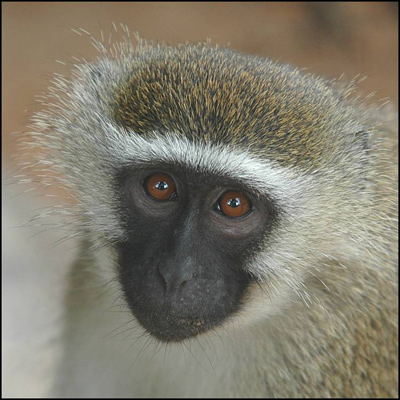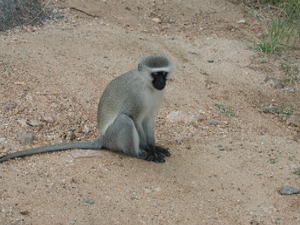Bison.
When we placed this cache, we saw vervet monkeys (blouapies) crossing the road. It was great to see a bit of "wildlife" on this lovely road.

About the Vervet Monkey (Blouapie) - Cercopithecus aethiops:
Appearance:
Males have a mass of 6kg and measure 1.1 m in length, whereas females are slightly smaller and weigh only 4kg. Vervets have a silver-grey body with a marked black face. There is a ridge of white over the eyebrows. The feet and tail tip are also white. The genitals of adult males are vividly coloured to signal sexual status.
Diet:
The Vervet Monkey's diet tends to be omnivorous, and includes fruit, flowers, leaves and insects. Primates are amongst the few mammals with colour vision, which allows vervet monkeys to distinguish between green and ripe fruit.
Breeding:
The Vervet Monkey is a seasonal breeder and single young are born between March and May after a gestation period of 140 days (approx. 7 months). Interbirth intervals could be longer than a single season, and is correlated with food abundance.

Social Behaviour:
Vervets are highly social animals, and occur in well organised troops, dominated by males. Females do not leave their natal group, but males emigrate from the troop at puberty. Access to prime food recourses is determined by the dominance hierarchy.
Habitat:
A sufficient density of tall trees and the availability of permanent surface water, allow this primate to occur in a wide variety of macro environments.
Where they are found:
Unlike many tropical African countries, there are only two monkey species in South Africa, namely the Vervet and the Samango monkey. Both are fruit eating, tree dwellers, as a consequence of which they can inflict serious damage to commercial fruit orchards. The Vervet Monkey is common throughout South Africa, and occurs wherever essential habitat requirements are met. The out of control expansion of wattle trees made it possible for the Vervet Monkey to extend its historical range.
Acknowledgements: http://www.krugerpark.co.za/africa_vervet_monkey.html